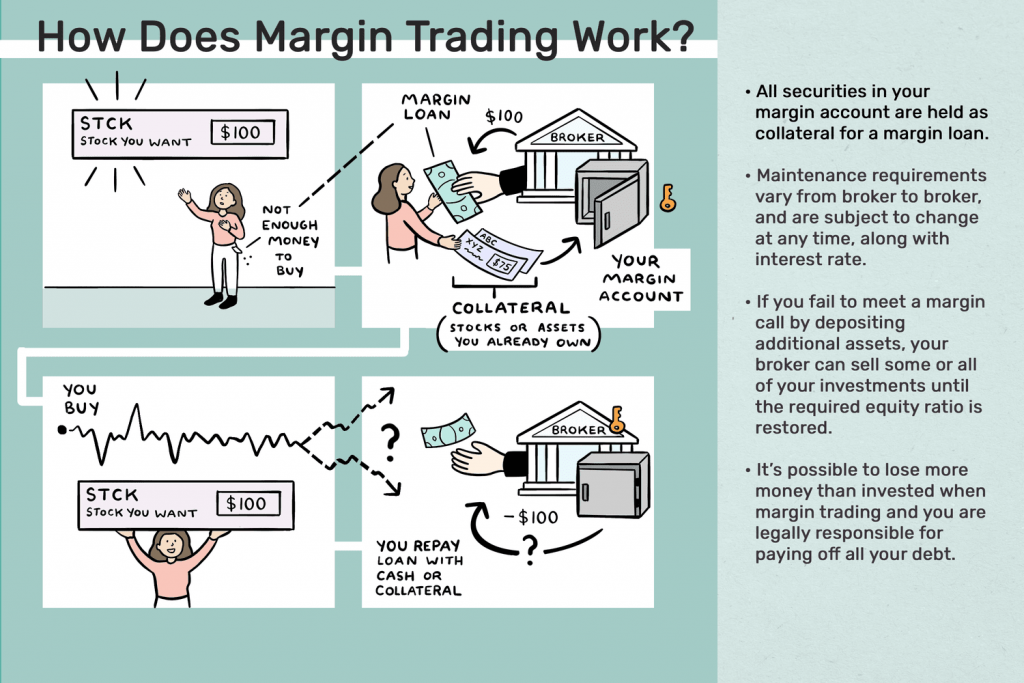What Is Free Margin in Trading?
Margin trading is a key tool for traders, allowing them to open positions using leverage. This is particularly useful for those seeking to maximize returns on their investments, even with limited initial capital. For instance, with only $500 in an account and a leverage of 1:20, a trader can open a trade worth $10,000.
This article explores the concept of margin, free margin, and how their proper use can benefit traders.

What Is Margin?
Margin is the portion of funds in a trader’s account that is set aside as collateral to open positions. These funds are locked by the broker to secure the trade. Margin enables traders to trade larger volumes of assets than their account balance would otherwise allow. The amount of margin required depends on the leverage used. For example, with a leverage of 1:50, a $10,000 position would require $200 in margin. It’s important to note that margin acts as a safety net in case of losses. If the market moves against the position, the broker may request additional funds (a margin call) to maintain the position and avoid automatic closure.
How to Calculate Margin?
To calculate the margin required to open a position, you can use the following formula: Margin = Trade Volume / LeverageExplanation:
- Trade Volume: This is the total value of the asset you wish to buy or sell. For example, buying one lot of EUR/USD (100,000 units of the base currency) equals a trade volume of $100,000.
- Leverage: This represents how much the broker multiplies your available funds for trading. For example, leverage of 1:50 means the broker allows you to trade 50 times the amount you have in your account.
Example:
Suppose you are trading Apple shares:- Price per share: $150
- Number of shares: 200
- Trade Volume: $150 × 200 = $30,000
- Leverage: 1:20
Negative Free Margin:
Negative free margin can occur in Forex or stock markets when the losses on your open positions exceed the remaining funds in your account. For example:- Account balance: $2,000
- Used margin: $1,500
- Free margin: $500
- Free margin = $500 – $600 = -$100
What is Free Margin?
Free margin in trading refers to the amount of funds available in a trader’s account after accounting for the margin reserved for open positions. It is the difference between the total account balance and the margin used to maintain current positions. Free margin plays a crucial role in margin trading, as it allows traders to open new positions or weather market volatility without risking a margin call.Example:
- Account balance: $10,000
- Margin used for open positions: $2,000
- Free margin: $10,000 – $2,000 = $8,000
- If your positions gain value, free margin increases.
- If they lose value, free margin decreases.
Levels of Free Margin
- High Free Margin: Sufficient funds are available to open new positions and cover potential losses.
- Medium Free Margin: Funds are decreasing but still safe for continued trading.
- Low Free Margin: Increased risk of a margin call; traders should exercise caution.
- Critical Free Margin: Funds are nearly depleted, and a margin call is imminent.
Tips for Successful Margin Trading:
- Use Leverage Carefully: Leverage amplifies potential gains but also magnifies losses. Always choose leverage levels cautiously.
- Monitor Margin Levels Regularly: Keeping track of free margin and account status helps avoid margin calls and forced position closures.
- Limit Position Sizes: Avoid opening positions that could wipe out your deposit in case of adverse market movements.
- Use Stop-Loss Orders: These help minimize losses by automatically closing positions at predefined levels.
- Maintain Discipline: Emotional control is critical in margin trading to avoid impulsive decisions due to market volatility.
